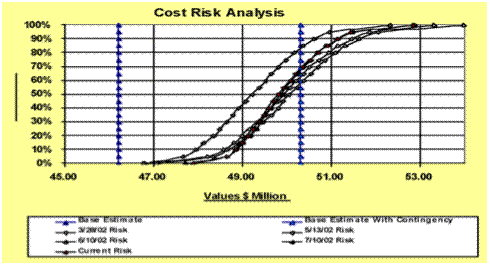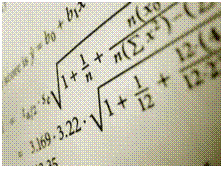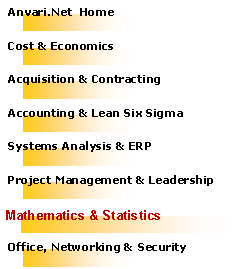
|
Mathematical Models ��A Mathematical Model is a description of a system using mathematical concepts and language. The process of developing a mathematical model is termed mathematical modelling. Mathematical models are used not only in the natural sciences (such as physics, biology, earth science, meteorology) and engineering disciplines (e.g. computer science, artificial intelligence), but also in the social sciences (such as economics, psychology, sociology and political science); physicists, engineers, statisticians, operations research analysts and economists use mathematical models most extensively. A model may help to explain a system and to study the effects of different components, and to make predictions about behavior.
Mathematical Models can take many forms, including but not limited to dynamical systems, statistical models, differential equations, or game theoretic models. These and other types of models can overlap, with a given model involving a variety of abstract structures. In general, mathematical models may include logical models, as far as logic is taken as a part of mathematics. In many cases, the quality of a scientific field depends on how well the mathematical models developed on the theoretical side agree with results of repeatable experiments. Lack of agreement between theoretical mathematical models and experimental measurements often leads to important advances as better theories are developed.
Statistics is the study of the collection, organization, analysis, interpretation and presentation of data. It deals with all aspects of data including the planning of data collection in terms of the design of surveys and experiments.
The word statistics, when referring to the scientific discipline, is singular, as in "Statistics is an art." This should not be confused with the word statistic, referring to a quantity (such as mean or median) calculated from a set of data whose plural is statistics ("this statistic seems wrong" or "these statistics are misleading").
Statistics is alternately described as a mathematical body of science that pertains to the collection, analysis, interpretation or explanation, and presentation of data, or as a branch of mathematics concerned with collecting and interpreting data. Because of its empirical roots and its focus on applications, statistics is typically considered a distinct mathematical science rather than as a branch of mathematics.� Some tasks a statistician may involve are less mathematical; for example, ensuring that data collection is undertaken in a way that produces valid conclusions, coding data, or reporting results in ways comprehensible to those who must use them.
Statisticians improve data quality by developing specific experiment designs and survey samples. Statistics itself also provides tools for prediction and forecasting the use of data through statistical models. Statistics is applicable to a wide variety of academic disciplines, including natural and social sciences, government, and business. Statistical consultants can help organizations and companies that don't have in-house expertise relevant to their particular questions.
Statistical methods can summarize or describe a collection of data. This is called descriptive statistics. This is particularly useful in communicating the results of experiments and research. In addition, data patterns may be modeled in a way that accounts for randomness and uncertainty in the observations.
These models can be used to draw inferences about the process or population under study�a practice called inferential statistics. Inference is a vital element of scientific advance, since it provides a way to draw conclusions from data that are subject to random variation. To prove the propositions being investigated further, the conclusions are tested as well, as part of the scientific method. Descriptive statistics and analysis of the new data tend to provide more information as to the truth of the proposition.
"Applied statistics" comprises descriptive statistics and the application of inferential statistics.[9][verification needed] Theoretical statistics concerns both the logical arguments underlying justification of approaches to statistical inference, as well encompassing mathematical statistics. Mathematical statistics includes not only the manipulation of probability distributions necessary for deriving results related to methods of estimation and inference, but also various aspects of computational statistics and the design of experiments.
Statistics is closely related to probability theory, with which it is often grouped. The difference is, roughly, that probability theory starts from the given parameters of a total population to deduce probabilities that pertain to samples. Statistical inference, however, moves in the opposite direction�inductively inferring from samples to the parameters of a larger or total population.
Statistics has many ties to machine learning and data mining. |



|
The course materials listed on this web site are copy rights � by the subject authors and publishers. They are solely intended for classroom teaching and online reference. Copy and/or redistribution of these contents are prohibited by the US copyright law. |

